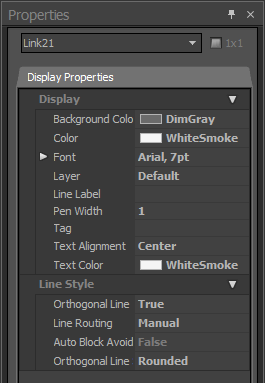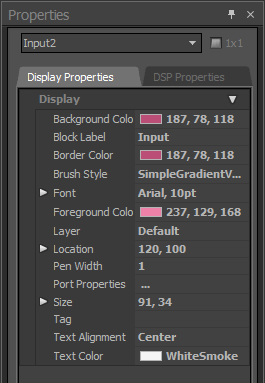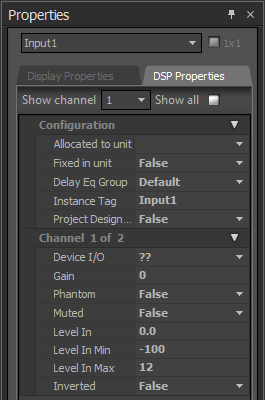Property Sheets
Layout Property Sheet
|
|
Provides an editable table of attributes regarding the Layout of the current partition. Only Display Attributes are shown for the Layout. Most Display Attributes duplicate functions found in the Format Toolbar However, some exceptions are as follows:
A context Menu allowing the Properties Sheet to be docked or floating, and to be hidden (closed) or to utilize Auto Hide (if docked) can be accessed by right-clicking over the Property Sheet The thumb-tack allows the Property Sheet to remain open while selecting other objects (disables Auto Hide). 1x1 allows any group of selected components (multi-selection) to appear on the menu. |
Line Property Sheet
|
|
Only Display Attributes are shown for Lines (component connections). Most Display Attributes duplicate functions found in the Format Toolbar. However, some exceptions are as follows:
A context Menu allowing the Properties Sheet to be docked or floating, and to be hidden (closed) or to utilize Auto Hide (if docked) can be accessed by right-clicking over the Property Sheet. The thumb-tack allows the Property Sheet to remain open while selecting other objects (disables Auto Hide). 1By1 allows any group of selected components (multi-selection) to appear on the menu. |
Object Property Sheet
|
|
Both Display and DSP Attributes are shown for component objects. Most Display Attributes duplicate functions found in the Format Toolbar. However, some exceptions are as follows:
Most DSP Attributes duplicate functions found in the individual component Control Dialog boxes (see Component Object Properties). However, some exceptions are as follows:
A context Menu allowing the Properties Sheet to be docked or floating, and to be hidden (closed) or to utilize Auto Hide (if docked) can be accessed by right-clicking over the Property Sheet The thumb-tack allows the Property Sheet to remain open while selecting other objects (disables Auto Hide). 1By1 allows any group of selected components (multi-selection) to appear on the menu. NOTE: the TesiraXEL 1200 amplifiers allow assigned a Delay Eq Group as a block or on a per-channel basis. See DSP_Properties in the TesiraXEL 1200 amplifier component objects section for more details. |



